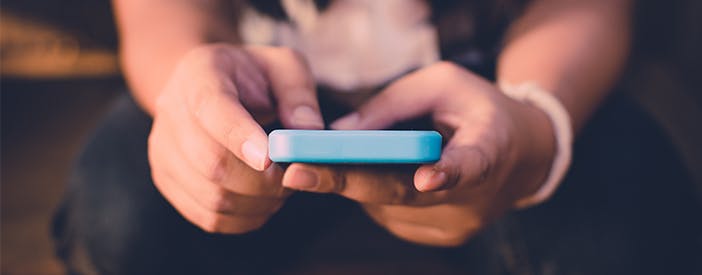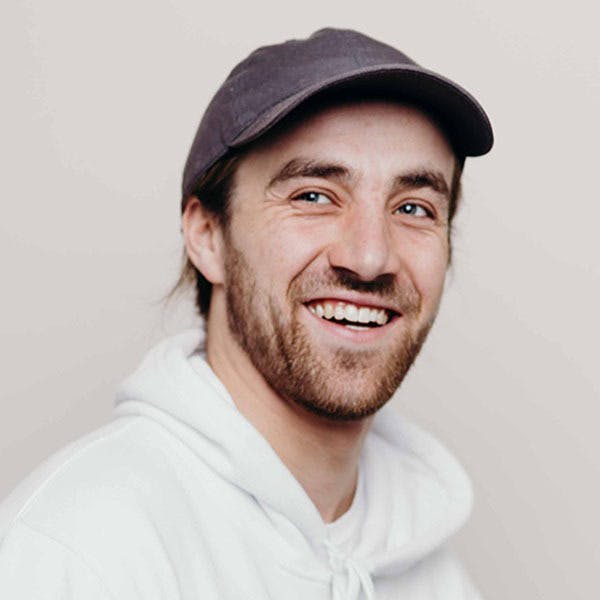We spoke to Attitude Presenter Brayden Murdoch about what he’s learnt through talking to thousands of young people every year about healthy relationships and making positive choices. Here’s what he had to say when we had a conversation about porn.
We live in a world where watching porn on your device between maths and science classes is common.I get to walk through a lot of school quads. As I seamlessly blend into the crowds of fresh faced youths, I often pass a huddle of teenagers fixated on a device. Naturally, I usually walk slightly closer so I can see what they’re looking at. Of course, I feign shock when I see that it’s porn that’s on that tiny screen, and they usually respond with shrinking embarrassment. We live in a world where watching porn on your device between maths and science classes is common. That’s a problem.
The problem with porn
92% of 12-year-olds have seen some sort of sexual imagery, and a quarter of them have seen porn. Let that sink in. 12-year-olds haven’t started high school yet. They’re still saving their pocket money for lip gloss and Fortnite credit, and they’ve almost universally been exposed to sexual imagery. At 12, the worst I’d seen was the handprint on the window at the end of Rose and Jack’s steamy car scene in Titanic.
69% of young New Zealanders reported watching violent or aggressive porn.69% of young New Zealanders reported watching violent or aggressive porn, and 72% reported viewing non-consensual activity. Studies have shown that people who regularly view porn are four times more likely to be sexually aggressive. Porn makes it hard for those who watch it to have healthy, safe sex with a partner – and consequently impacts their ability to have healthy, safe relationships at all.
When Playboy first launched in the early 70’s, they were producing 7.2 million copies a month. Today, Pornhub has 81 million people visiting it every day. Porn is prolific amidst our young people. In 2007 Apple introduced the iPhone and it didn’t take long for devices to be attached to everything we do. While Steve Jobs isn’t to blame (his turtlenecks tempted very few), the majority of porn is now viewed via a handheld device. The immediate and private access our young people to their devices very likely has something to do with how much graphic content they’re seeing.
Practical steps to take – protecting your devices
Devices don’t have to be dangerous – there is plenty you can do to guide your young person’s behaviour when it comes to porn and other potentially damaging content online. We’ve put some ideas together, from apps and settings to family contracts and how to use them here.
Setting a bedtime is super helpful when it comes to stopping kids from searching stuff they don’t want you to see. At Parenting Place, we partner with Safe Surfer because we’re big believers in what they do. Safe Surfer provide a piece of hardware for you to plug into your wifi router that monitors the content coming through, blocks the inappropriate stuff, and allows you to set bedtimes for individual devices. Setting a bedtime is super helpful when it comes to stopping kids from searching stuff they don’t want you to see.
You don’t need to be a tech whizz to use Safe Surfer and you’ll get reports back from them on device activity – which gives you the perfect platform to start talking about what’s being watched.
How to start the hard conversations
You have to start having conversations with your young person about porn.You probably don’t want to hear this, because it’s going to be hard, but you have to start having conversations with your young person about porn. Conversations plural, because one is not going to be enough.
Your child will naturally be curious about their body and sexuality, be responsive to that in an age-appropriate way. Otherwise, they’re going to start looking for answers elsewhere and believe me, they’ll find them. It’s just fairly unlikely that they’ll be good answers. 73% of regular porn users see watching it as a learning forum.
It’s really important to take shame and shock out of the equation.
Prepare yourself well for your conversations around sexuality and healthy expressions of it. Have a read, and talk to whoever you’re parenting with about who will be best to get this conversation going. It’s really important to take shame and shock out of the equation. If they sense shame, they’ll only look even deeper into their devices for answers.
Be aware of porn-related problems and prepare yourself to talk through them in an open way. Maybe even come up with some questions to get the conversation going, “I’ve heard that teenagers are learning about sex through porn? What do you think about that?”
Where to have your conversations about it
Sometimes having a conversation in the car or while you’re doing something is the best way to start. There’s no need to sit down across a table and lay down the law. Prolonged eye contact is generally not a teen’s choice at the best of times. It’s definitely not going to be their favourite way to chat when you’re talking with them about porn.
As awkward as it may be, remember that addressing this now sets your young person up for a better future. Porn is addictive – it’s recently been classified as a health issue by the World Health Organisation which is about as official as an addiction can get.
By talking about porn with young people, you’re helping them to have healthier relationships as they grow, as well as saving them from struggling with an addiction. If they do tell you that they’re struggling with porn, and you feel out of your depth, don’t be afraid to get help. We’ve got amazing Family Coaches at Parenting Place who can help you to work through this. You can also find heaps of helpful resources and recommended counsellors through The Light Project.
This article is part of a paid partnership between Parenting Place and Safe Surfer.

